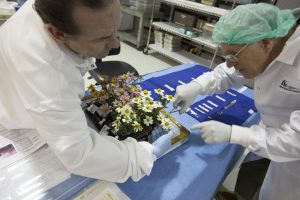At the count of 1, 2, 3, 4… a molecule can vanish. This new material has a self-destructing property that helps it disappear at a specific time. The materials use and reuse of materials helps it to disintegrate at a specified time. This new invention could lead to building a transplant anchor, drug delivery system, and a vanishing ink.
The disappearing act occurs basically due to the requirement of small amount of energy by the molecule to stay in their active form or else they may poof away in no time. The material rather than transforming themselves prefer to disappear into the air. Generally, the humans after using the material toss it into the landfills for slow degradation, burn it into ashes, or recycle by using heavy processes before returning it back to the supply chain. The amount of energy and material wastage in the processes is unimaginable.
The bonds between the molecules determine the life of the molecules. For instance, the carbon bonds formed between the polymers of plastic is kind of difficult to breakdown by the bacteria and so is the case in human-made solids consisting of covalent bonds. However, the weaker bonds or casual hookups including Van der Waals, and hydrogen bonds are 10 times weaker than the covalent bond and thus can be easily broken down. This repulsion or low strength of attraction helps the material vanish at a larger distance. The major factor of the molecules is the need for constant input of energy to keep working. If there is no supply of energy then the molecules repulse and return to a simpler state. The need of energy and nutrients plays a vital role or else the molecules disperse into their earlier forms.
The life-based molecules posses a self-healing property, that is, they can quickly reassemble into a complex structure with a small input of energy. The lead researcher Job Boekhoven and his team from the Technical University of Munich in Germany have decided to use the life’s way of assembling materials in order to create a new material. The new materials created are called supramolecular molecules that require some input of energy to retain their current forms.
The first material made was a colloid made up of tiny beads, which is the size of a diameter of human hair. When energy is influxed, the beads assemble or disassemble in a specific manner. The basic reason to develop this is drug delivery; for instance, the drugs that have to pass through the bile acids, these materials can prove beneficial. Similarly, a fluffy crystalline material that is seen becomes cloudy and opaque when energy is infused on it. Hence, it can help reduce the use of normal paper. Lastly, a long fiber-like material that can self-assemble can help anchor tissue transplants and later vanish.
These materials may have nothing similar to life properties what makes these self-replicate is what the researchers are looking to find an answer for.
